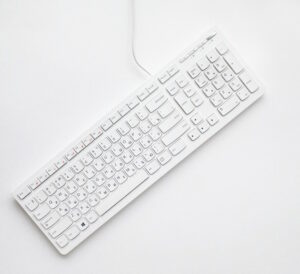Software can be confusing, and many enterprise applications have some overlapping functionality, making it even harder to compare manufacturing software. When it comes to PLM vs ERP or PLM vs MES, how do you know which ones to invest your scarce IT budget in? The answer may surprise you.

What Do They Do, Anyway?
Enterprise Resource Planning (ERP)
ERP is the granddaddy of enterprise applications, has been around since the 1960s. ERP includes most accounting functions, including general ledger, as well as inventory management, and resource and inventory planning. It may have some shop floor control functions if it targets the manufacturing industry. Its Bills of Materials is used for planning and issuing materials to the shop floor, along with some form of associated shop orders. An ERP system may be essential for long-range planning in industries with long lead time items or complex bills of materials.
ERP systems have been around the longest and include most required accounting functions.
Manufacturing Execution Systems (MES)
MES systems bring much more sophistication to the shop floor than ERP usually offers. MES systems allow for finer scheduling gradations than ERP solutions, which is usually limited to scheduling by day or shift. MES systems can schedule to the minute, and they offer rapid finite scheduling capabilities. While they may include some long-range planning capabilities, it is usually not as sophisticated as ERP systems offer. An MES system may be essential if you have complex production processes with frequent bottlenecks, limited capacity, or you often use alternative routings in production.
MES platforms offer more detailed manufacturing scheduling tools, which is particularly useful for complex production processes.
Product Lifecycle Management (PLM)
PLM systems manage product strategy from the initial idea through prototyping, product launch, and retirement. They excel at managing phase-in or phase-out of products or component changes. They help ensure that the company introduces new products on time and on budget with project management capabilities that are well-tuned for product design processes. They include engineering Bills of Materials (BoM) that allow for design and maintenance without affecting manufacturing processes before product release.
PLM solutions manage products throughout their entire lifecycle – from initial idea conception all the way through disposal.
Companies usually use them in conjunction with CAD systems, and modern PLM systems include the ability to do 3D modeling and connect to IoT networks to allow for rapid prototyping of products and optimized processes. They are essential in any industry that must offer continuous product innovation to retain market share. The best PLM systems include built-in integration capabilities to a wide variety of ERP and MES systems. PLM maximizes revenue and margin by product, which is an essential goal for any company.
Compare Manufacturing Software
PLM vs ERP
 Since both products include Bill of Material and routing management, can a company survive with just ERP? It is possible – but it may be the difference between surviving and thriving.
Since both products include Bill of Material and routing management, can a company survive with just ERP? It is possible – but it may be the difference between surviving and thriving.
For example, try using ERP to calculate the best time to phase in an engineering change or introduce a new model without taking an inventory hit. With ERP, you’re looking at a complicated off-line manual process that at best offers a rough approximation—and even then, only with a lot of effort. PLM, on the other hand, helps with exactly those types of problems.
And if time to market is essential, you need PLM for its rapid prototyping tools and ability to plan processes with digital twin, IoT, 3D printing, and many other advanced technologies.
PLM vs MES
Both products include ECN, BoM management, and IoT integration, so can you survive with just MES? Probably not. MES excels at shop floor management, but it doesn’t usually handle product design and new product introductions. MES usually only has one BoM, although you can use component substitutions when needed. It doesn’t help with rapid prototypes or digital twins. MES is more about optimizing the use of shop floor resources than it is about managing products and maximizing profitability and revenue.
Align Your Manufacturing Software Selection with Your Company Strategy
When it comes to comparing PLM vs ERP or PLM vs MES, no two companies will have the same priorities, strategies and available resources, so each company must make the decision by considering its own position.
Ultimately, you should select the solution that best aligns with your overarching business goals.
But every company today faces increased competition that requires constant product innovation. It’s also important to wring every bit of profitability out of existing products, and to introduce new products in a way that ensures they don’t leave the company with a pile of obsolete inventory. That makes a PLM solution essential for most companies.

Of course, in an ideal world companies would have the budget and resources to have all three solutions, fully integrated and sharing data. If that’s not possible, look at the areas of biggest impact on your company’s profitability, and you will find that PLM is an essential system.
At 3HTi we have lots of experience understanding manufacturing organizations and all the supporting software. If you need some more help figuring out what is the right fit for your organization, feel free to contact us and we would be happy to help!

